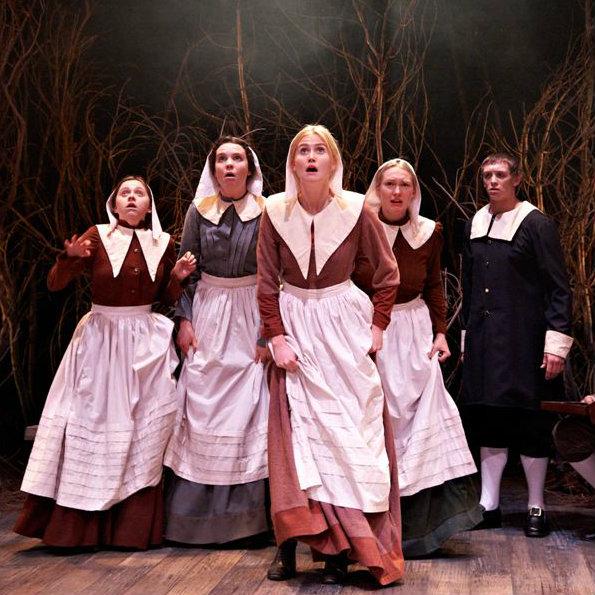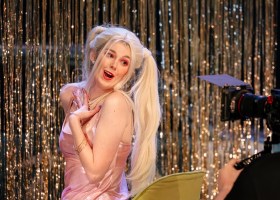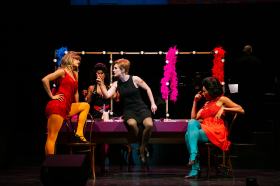The large ensemble cast took advantage of the nature of early New England settlement to differentiate characters through a variety of accents, some working better than others. The progress of the play requires many small speaking parts and some scenes involving large groups, leading to slightly desperate overacting by actors who seemed to confuse volume with emotional intensity. Other side characters were easily identifiable but dramatically lacking by being reduced to a single catch phrase or physical tic.
Despite these criticisms, there were some well-considered, fully developed and mature performances by Luke McMahon, Jai Higgs, Arabella Mason and Megan McGlinchey. Mason played Goodwife Proctor with a reserved dignity, pained restraint and withdrawn, mannered affection that might play better on the screen rather than the stage, but by dint of exploring the options available managed to use stance and posture more effectively than pages of lines. McMahon and Higgs were each consistent in their respective portrayals of John Proctor and Reverend Hale, examining the crises of conscience and character faced by each man as events unfolded. McGlinchy’s physical control in playing the aged Rebecca Nurse obviated the lack of wig or wrinkles in her costumed appearance, without ever slipping into slapstick or parody – a fine line, especially in the final scene, which would have turned tragedy to farce.
As expected from WAAPA, the technical work was magnificent, with lighting perfectly timed to match mood, scene, and character movements, but also making use of hanging window frames to create shadows elsewhere on the stage. The high tension in the pre-dawn conferences leading to the further executions of the second act was subtly highlighted by deftly mixed lighting that changed in quality with the lightening of the sky in real time, working with the dialogue to create a sense of urgency. The hanging features worked with the minimalist set and the audience-surrounded challenges of the Roundhouse Theatre, as a sense of place was established without blocking lines of sight.
The costume design was also to a very high standard, with characters complemented by their outfits, and their various changes in fortune accentuated by the appropriate change – whether subtle or dramatic – in their clothing and presentation.
Patchy acting marked this as a student production, but one showing thespian promise in the next generation.
Rating: 3 stars out of 5
The Crucible
Written by Arthur Miller
Directed by Michael Jenn
Production Manager: Keaton Howe
Set & Costume Designer: Stephanie Hains
Lighting Designer: Emily Telfer
Sound Designer: William Langdale
Percussion composed and performed by Imogen Stacey
Performed by 3rd year Acting: Luke McMahon, Anna Bamford, Jai Higgs, Arabella Mason, Byron Hajduczok, Megan McGlinchy, Andrew Hearle, Troy Polis, Matthew Cooper, Alastair Osment, Georgia Scott, Abbie-Lee Lewis, Melanie Senter, Renae Small, Emily Kennedy, Damien Strouthos, Travis Jeffery, Cecelia Peters
Roundhouse Theatre, WAAPA, Mount Lawley
August 24 – 30






